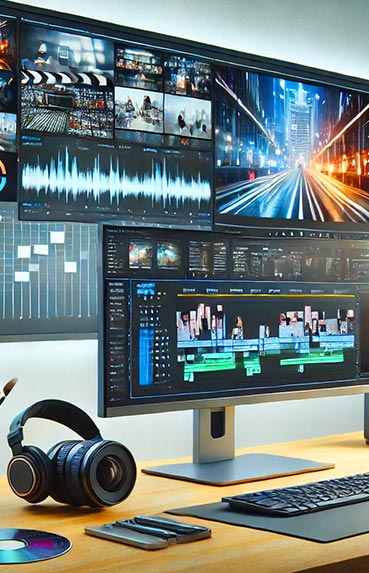In today's digital era, where online shopping is constantly growing, the loading speed of an online store can make the difference between a successful sale and an abandoned cart. A critical factor influencing a website's speed is the size and optimization of images. High-quality images are essential for attracting customers, but if not managed properly, they can significantly slow down your page's loading time. This article explores image optimization techniques that will help you speed up your online store, improve user experience, and boost your sales.
Importance of Image Optimization
Loading Speed and User Experience
Loading speed is crucial for user experience. According to Google studies, 53% of users abandon a mobile site if it takes more than three seconds to load. Fast loading not only enhances user experience but can also increase conversions. Images are responsible for most of a webpage's loading time. Therefore, optimizing them can have a significant impact on your online store's performance.
SEO and Search Engine Visibility
SEO is vital for attracting traffic to your online store. Google and other search engines consider loading speed an important factor in their ranking algorithm. A page that loads quickly is more likely to appear in the top search results, which can increase traffic and sales.
Image Optimization Techniques
Image Compression
Compression is a key technique for reducing image size without sacrificing quality. There are two main types of compression:
- Lossy compression: This technique removes some data from the image, reducing its quality almost imperceptibly. It's ideal for images where quality is not an absolute priority.
- Lossless compression: Reduces file size without removing data, maintaining original quality. It's more suitable for images requiring high quality.
Tools like TinyPNG or JPEGmini are excellent for applying compression to your images before uploading them to your online store.
Appropriate Image Formats
Choosing the right format for your images can make a big difference in their size. The most common formats are JPEG, PNG, and GIF, each with its advantages and disadvantages:
- JPEG: Ideal for photographs and images with many colors. Offers good lossy compression.
- PNG: Suitable for graphics, logos, and any image requiring transparency. Uses lossless compression.
- GIF: Mainly used for animations but not ideal for static images due to its limited color palette.
An emerging format is WebP, developed by Google, which provides superior compression without significant quality loss. Implementing WebP in your store can reduce image sizes and improve loading times.
Image Dimensions
Ensure images are at the correct dimensions before uploading them to your store. There's no point in uploading a 4000x3000 pixel image if it will only be displayed at 400x300 pixels. Use image editing tools to adjust dimensions to your website's specific needs.
Use of Responsive Images
Responsive images are essential in a world where users access websites from various devices. By implementing responsive images, you can ensure that different image sizes load depending on the device, optimizing loading speed. The srcset attribute in HTML is an effective way to achieve this.
Implementation of Advanced Techniques
Lazy Loading
Lazy loading is a technique that delays loading non-visible images until the user scrolls to them. This significantly improves the initial page loading time. Implementing lazy loading is relatively simple and can be achieved through plugins on platforms like WordPress or via JavaScript.
"Lazy loading can reduce page loading time by 30% or more, improving user experience and site efficiency."
Use of Content Delivery Networks (CDN)
A CDN stores copies of your images on servers worldwide, reducing the time they take to load for the end user. By distributing content on servers close to users, CDNs can improve loading speed and website availability. Cloudflare and Amazon CloudFront are popular CDN services that can be easily integrated into your online store.
Automating Image Optimization
Automating image optimization can save you time and ensure all images on your store are always optimized. Tools like ImageMagick and custom scripts can be configured to automatically adjust image size, format, and compression when uploaded to your online store.
Practical Tips for Maintaining a Fast Online Store
Regular Performance Monitoring
Regular monitoring is key to maintaining your store's speed. Tools like Google PageSpeed Insights or GTmetrix provide detailed analyses of your site's performance and specific recommendations to improve loading speed.
Review and Update Images
Periodically reviewing your store's images to ensure they are optimized is essential. As you update your inventory or change your site's design, ensure new images meet optimization standards.
Continuous Education and Training
Stay updated with the latest trends and technologies in image optimization. Web technology is constantly evolving, and what works today may not be the best practice tomorrow. Participate in webinars, read specialized blogs, and consider continuous training to stay current.
Implementing these image optimization techniques will not only improve your online store's speed but also provide a superior user experience, increasing conversion possibilities and success in the competitive world of e-commerce.

















